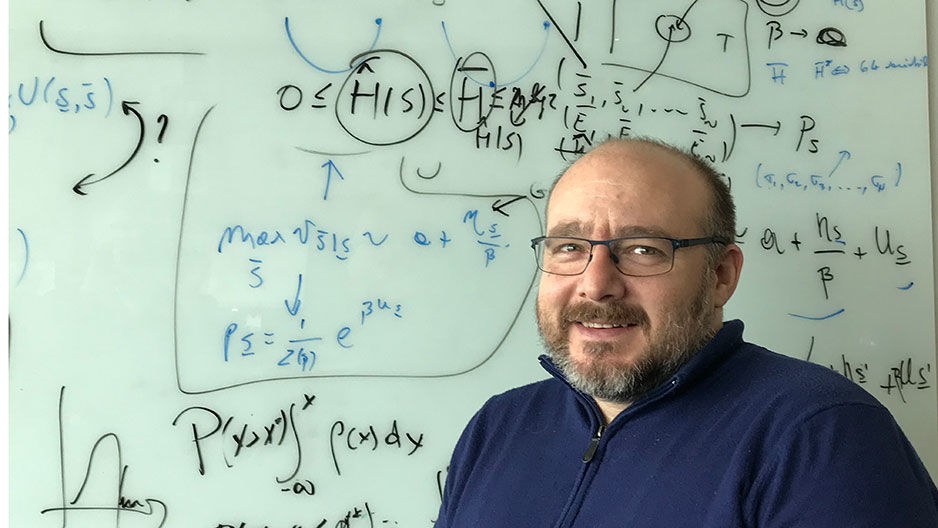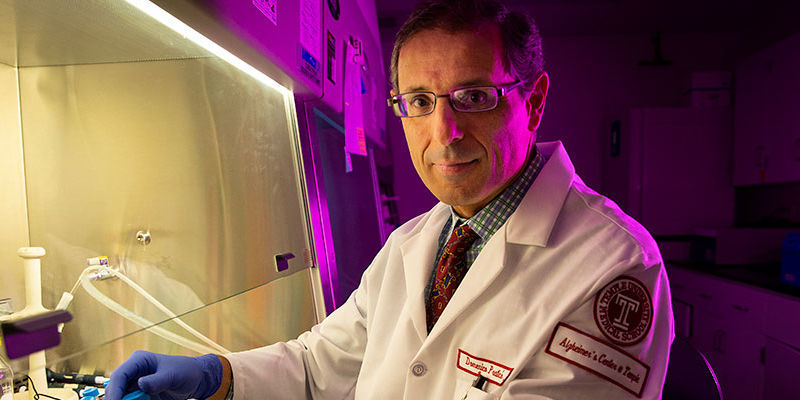Temple researchers identify potential alternative to opioids for pain
The researchers, in collaboration with a West Coast biotech firm, are investigating an ion channel that may be used to reduce pain.

Research conducted by scientists in Temple’s College of Science and Technology (CST) has identified a potential next-generation chronic pain relief strategy that could provide a safer alternative to opioids.
The research, a collaborative effort between CST and Genentech, Inc., a leading biotechnology firm, was recently published in the prestigious Proceedings of the National Academy of Sciences.
“Given the worldwide opioid abuse epidemic, to address chronic pain, we need to develop molecules that can offer relief to patients without the nasty side effects known to occur with opioids,” said CST Associate Professor of Biology Vincenzo Carnevale, one of the study’s co-principal investigators. “Our goal is to inhibit pain signals in the nerve fibers where such signals originate—in your finger if you touch something hot, for instance—rather than treating it downstream in the central nervous system.”
For the past five years, Carnevale and a team of researchers in Temple’s Institute for Computational Molecular Science (ICMS) have developed world-renowned expertise in the study of an ion channel called TRPA1, which generates the electrical signals that enable the nervous system to sense pain. All cell membranes—even those in the simplest bacteria—are studded with ion channels, the proteins that are nature’s device for detecting environmental conditions and moving ions, or atoms with a positive or negative charge, into or out of a cell.
The Temple researchers began by using machine learning approaches to analyze the TRPA1 ion channel across a wide range of species. By focusing on the complex patterns of evolutionary mutations, they were then able to infer the principles underlying the functioning of TRPA1.
Based in South San Francisco, California, Genentech—one of the leading founders of the biotechnology industry—then relied, in part, on this ICMS research conducted at CST to design and synthesize molecules that target the TRPA1 ion channel.
To test the molecules developed by Genentech, the Temple researchers used molecular simulations to generate structural models, made predictions about modifications of these molecules that would increase their potency and proposed a theoretical model for how they act.
Subsequent in vitro testing by Genentech has validated the hypotheses. According to Carnevale, basic proof-of-concept testing in laboratory animals could occur as early as next year.
“We’ve established design principles for the next drug candidates,” Carnevale said.
Research collaborators on the project included: Jun Chen, a senior scientist with Genentech who was the co-principal investigator and the firm’s research team leader; Michael L. Klein, Laura H. Carnell Professor of Science and Dean of the College of Science and Technology at Temple; and Elenora Gianti, a former research assistant professor of chemistry at Temple who is currently a visiting assistant professor of chemistry and biochemistry at Swarthmore College.
The research was supported by Genentech, the National Institute of General Medical Sciences of the National Institutes of Health, and the National Science Foundation. The NSF, NIH and the U.S. Army Research Laboratory also funded Temple’s high-powered computing resources, which were used for computations.
—Bruce E. Beans


